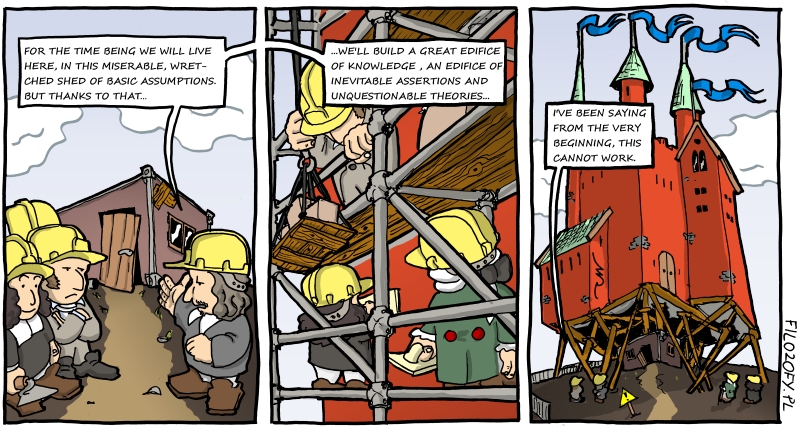C. (CC.) Religion: VII. Religion: A. Natural religion & B.
Religion in the form of art (410-453)
Wednesday, 6 May 2015 (notes by Marton Ribary)
The link between religion and art:
Hegel links the first two shapes of religion, that is, natural
religion and religion in the form of art by the person who performs the deed
uniting form and matter. The artificer (Werkmeister) is a superhuman person who
performs the embodiment of the idea and creates the tangible world in the shape
of natural religion. Hegel’s description and terminology fits the demiurge of
Greek (and later Gnostic) thought where the demiurge is not the ultimate
Godhead, but simply the performer of creation.
The same creative power is accredited to the artist. In the shape
of the religion of art, the demiurge’s creative power has become self-conscious
in the person of the artist. The power to unite the two equal manifestations of
the Spirit, namely matter and from, are no longer external, but possessed by
the Spirit who becomes self-conscious in the person of the artist.
The self-discovery of the artist:
As Hegel describes in §§708-710, the Spirit gradually discovers itself
in the person of the artist, it eventually becomes self-conscious. (1) The
anonymous creator of the artwork is yet to realise the relevance of the creative
deed which has united the two equal manifestations of the Spirit, that is, the
matter and the form. (2) By the admiration the artwork attracts from an
audience, the artist realises that s/he has created an embodied idea which has
independent existence. Thereby the Spirit recognises itself in the artwork and
becomes self-conscious of its own creative power. The artwork is an external
manifestation of the Spirit which has yet to return to the person of the artist
so that the self-consciousness of the Spirit become individual and immediately
present. (3) According to Hegel, the return of the Spirit to itself (from the
artwork to the person of the artist) is realised by language which enables a
higher form of self-consciousness in which the creative power of the Spirit is
immediately accessible to itself and retained in its own person.
The temporal shapes of religion:
In our usual fashion, we made our way backwards in Hegel’s
exposition. In §683, Hegel describes three temporal shapes of religion which
are distinguished from each other according to the Spirit’s journey of
self-discovery. (1) In natural religion, “Spirit knows itself as its object in
a natural or immediate shape”, and therefore “Spirit in general is in the form
of consciousness”. (2) In the religion of art, “Spirit knows itself in the
shape of a superseded natural existence”, and therefore Spirit in
general is in the form “of self-consciousness”. (3) In revealed religion, Spirit
overcomes the one-sidedness of the previous two shapes, and realises the unity
of consciousness and self-consciousness. “The self is just as much an immediacy,
as the immediacy is the self.”
Beyond the shapes of religion:
However, Hegel adds that even though “Spirit has indeed attained
its true shape” in revealed religion, the shape and the accompanying picture-thought
(Vorstellung) are yet to be superseded so that Spirit may reach the Notion
(Begriff) “which equally embraces its own opposite”. (§683) The final stage of
the Spirit’s journey which is beyond the shapes of religion, and beyond any
shapes for that matter, is presumably what Hegel calls “Absolute Knowing” in
the concluding part of the Phenomenology.
The definition of religion:
Hegel’s understanding of religion is different from the common
use of the word. Religion is defined as “the perfection of Spirit into which
its individual moments – consciousness, self-consciousness, Reason, and Spirit –
return … The genesis of religion in general is contained in the movement
of the universal moments.” (§680) Contrary to science which maintains a sharp
division between the observing “I” and the observed “object”, religion
supersedes the division and allows the Spirit’s self-discovery.

